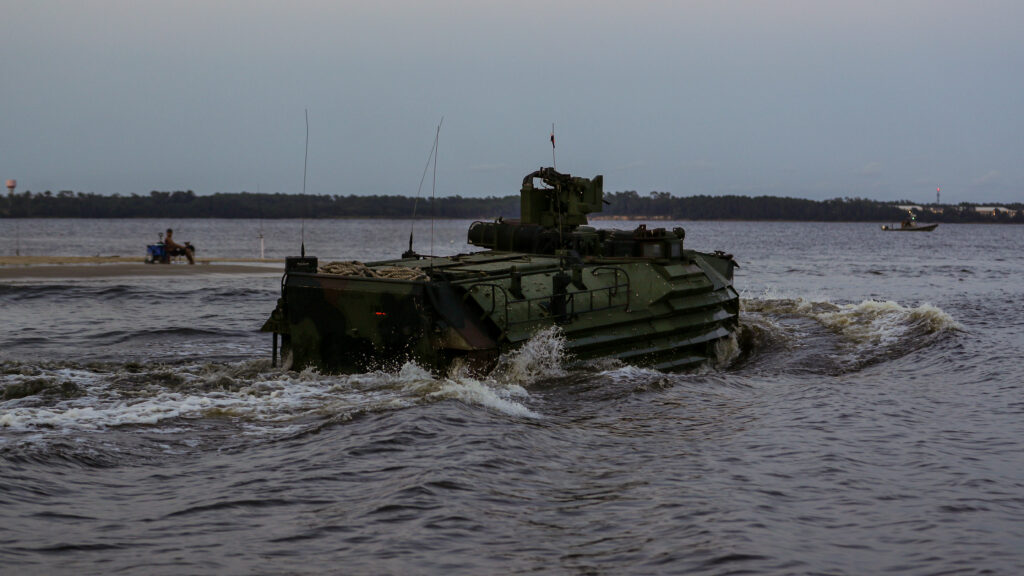
ARLINGTON, Va. — The Marine Corps has decided to cease deploying AAV7 assault amphibious vehicles as well as operating them in water during exercises, the Corps said in a release.
The decision is a consequence of a fatal mishap on July 30, 2020, with the sinking of an AAV7 off California, resulting in the deaths of eight Marines and a Navy corpsman.
The AAV7, which entered service in 1972, is the prime amphibious vehicle of the Marine Corps. It has gone through upgrades since. It is being replaced by the Amphibious Combat Vehicle.
The following statement was released by Maj. Jim Stenger, a Marine Corps spokesman:
“The Marine Corps stands by the efficacy of the recommendations that came from the multiple investigations into the AAV mishap from the summer of 2020, and with those recommendations implemented and sustained, the AAV is a safe and effective vehicle for amphibious operations.
“That said, given the current state of the amphibious vehicle program [the program that manages both AAVs and ACVs], the commandant of the Marine Corps has decided the AAV will no longer serve as part of regularly scheduled deployments or train in the water during military exercises; AAVs will only return to operating in the water if needed for crisis response. This decision was made in the interest of the long-term health of the amphibious vehicle programs and future capabilities. The AAV will continue to operate on land; 76% of its tasks are land-based. In doing so, we reserve the capability to reverse this decision should the need arise.
“The Marine Corps will continue deployments with myriad lethal capabilities which currently exist, and we remain committed to fielding the Amphibious Combat Vehicle.
“ACVs were temporarily suspended from open-ocean waterborne operations as we worked to solve an issue that was identified with the towing mechanism. We expect that issue to be resolved soon and for ACVs to return to the water early in the New Year.”






